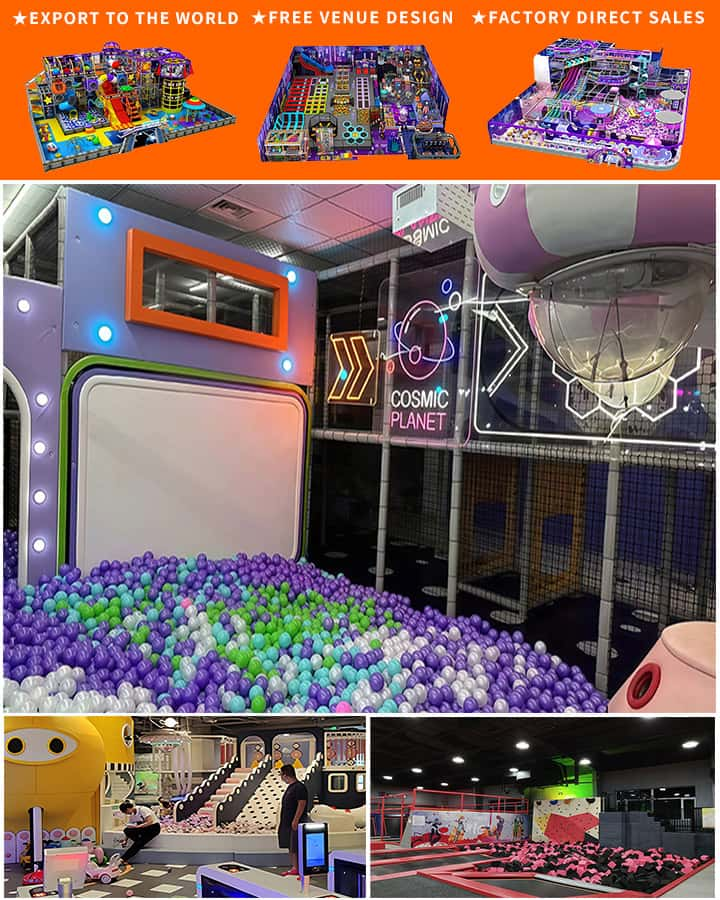Starting a children’s indoor playground can be an exciting venture, offering numerous opportunities for both business growth and personal fulfillment. However, like any successful business, it requires careful planning, strategic thinking, and meticulous attention to detail. In this article, we will guide you through the essential elements of crafting a comprehensive business plan for your children’s indoor playground.
Understanding Your Market
The first step in developing your business plan is understanding the market. Conduct thorough market research to identify the demand for indoor playgrounds in your area. Look into demographics, such as the population size, age distribution, and income levels. Additionally, analyze the competition to understand what they offer and identify gaps that your playground could fill.
Surveys, focus groups, and online research can provide valuable insights into parent preferences, spending habits, and potential challenges. By understanding your target market, you can tailor your playground’s offerings to meet their needs and stand out from competitors.
Defining Your Unique Selling Proposition (USP)
Every successful business needs a unique selling proposition—something that sets it apart from the competition. For a children’s indoor playground, this could be innovative play equipment, a distinctive theme, exceptional customer service, or a combination of these factors. Identifying your USP will help you attract customers and build a loyal clientele.
Consider what makes your playground special and how it can address the needs and desires of both children and parents. Whether it’s state-of-the-art climbing structures, educational games, or a safe and hygienic environment, make sure your USP resonates with your target audience.
Developing a Detailed Financial Plan
A sound financial plan is crucial for the success of your indoor playground. Start by outlining your startup costs, which may include leasing or purchasing a property, renovating the space, buying play equipment, obtaining permits, and initial marketing expenses. Next, estimate your ongoing operational costs, such as staff salaries, utilities, maintenance, and supplies.

Revenue projections should be based on realistic estimates of attendance rates and average spending per visit. Consider different pricing strategies, such as entry fees, membership plans, and additional services like birthday party hosting. It’s also important to create a cash flow statement to ensure that you have enough liquidity to cover expenses until the business becomes profitable.
Designing Your Space
The layout and design of your indoor playground are critical to providing a fun and safe environment for children. When designing the space, consider the following:
Safety First: Ensure that all play equipment meets safety standards and regulations. Use soft flooring materials to cushion falls and incorporate barriers where necessary.
Variety of Activities: Offer a range of activities to cater to different age groups and interests. Include climbing structures, slides, ball pits, interactive games, and quieter areas for younger children or those who need a break.
Cleanliness: Maintain high hygiene standards by regularly cleaning and sanitizing the playground equipment and facilities. Implement a cleaning schedule to keep the space pristine.
Accessibility: Make sure the playground is accessible to children with disabilities by incorporating ramps, wider doorways, and adaptive equipment where needed.
Marketing and Promotion Strategies
Effective marketing is essential to attract customers and grow your business. Utilize a mix of traditional and digital marketing strategies to reach your target audience. Consider the following approaches:
Social Media: Create engaging content on platforms like Facebook, Instagram, and Pinterest to showcase your playground and attract families. Use targeted ads to reach parents in your local area.
Local Partnerships: Collaborate with local schools, daycare centers, and community organizations to promote your playground. Host events or offer special discounts to these groups.
Online Listings: List your playground on family-oriented websites and review platforms to increase visibility. Encourage satisfied customers to leave positive reviews to build credibility.
Grand Opening: Plan a grand opening event to generate buzz and attract initial customers. Offer special promotions or discounts during the event to entice families to visit.
Operational Planning
Efficient operations are key to maintaining a successful indoor playground. Develop standard operating procedures (SOPs) for staff training, safety protocols, and daily tasks. Hire friendly and responsible staff who are passionate about working with children and committed to providing excellent customer service.
Regularly monitor and evaluate your business performance using key performance indicators (KPIs) such as attendance rates, customer satisfaction, and revenue growth. Be prepared to adapt your strategies based on feedback and changing market conditions.
Conclusion
Creating a detailed business plan is an essential step in launching a successful children’s indoor playground. By understanding your market, defining your unique selling proposition, developing a robust financial plan, designing a safe and engaging space, implementing effective marketing strategies, and ensuring efficient operations, you can set a strong foundation for your business. With careful planning and dedication, your indoor playground can become a thriving hub of joy and excitement for children and a profitable venture for you




